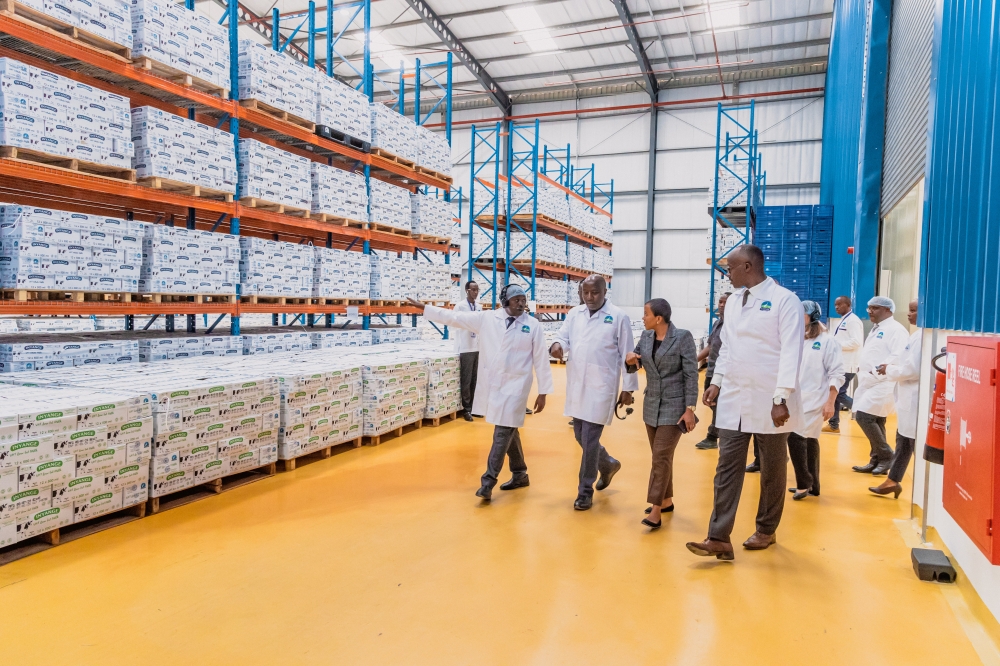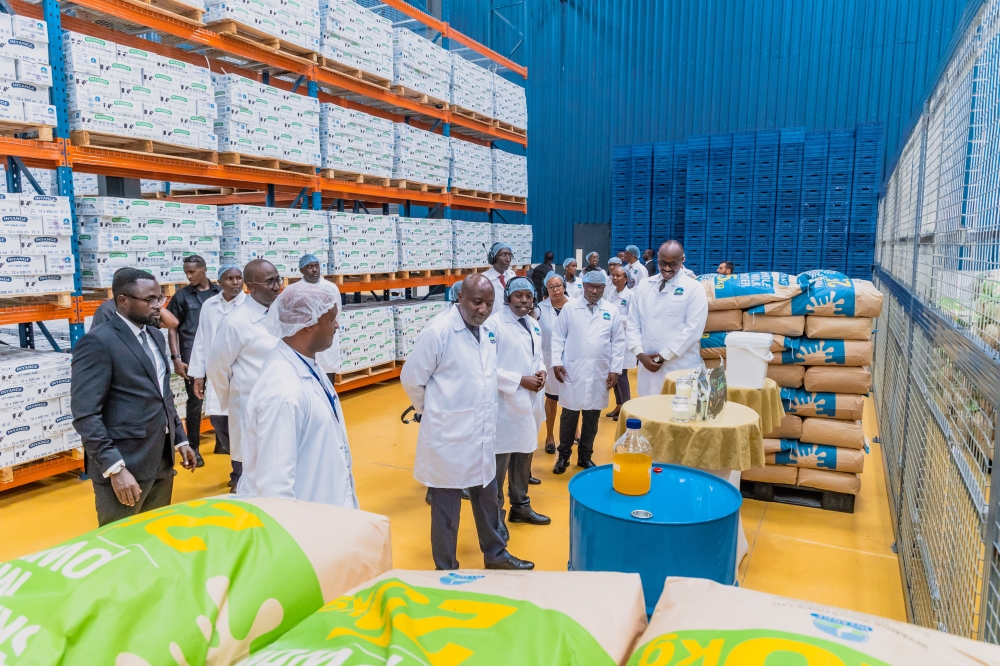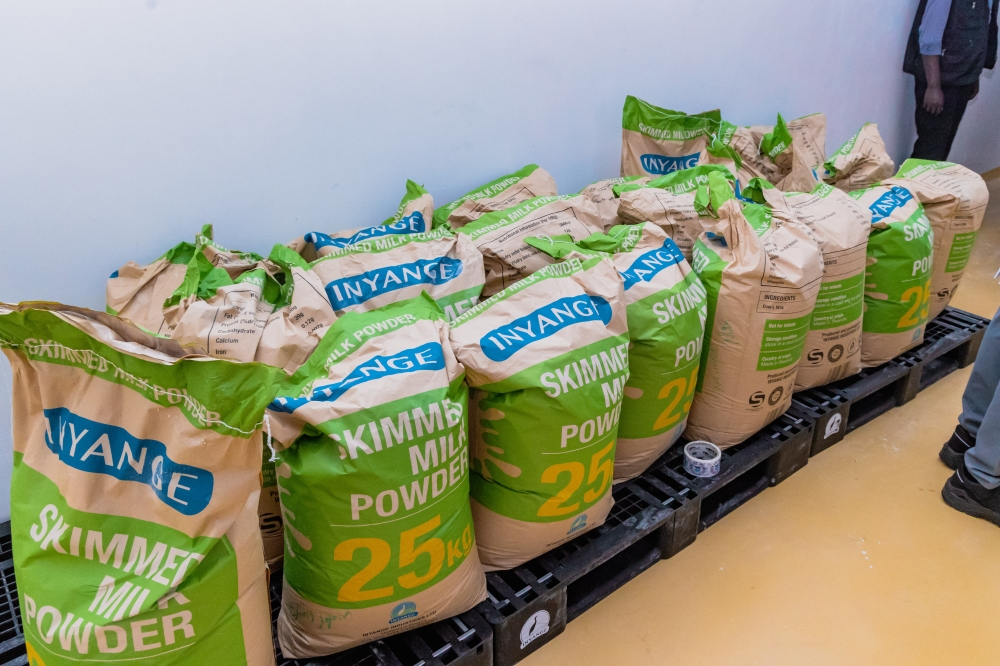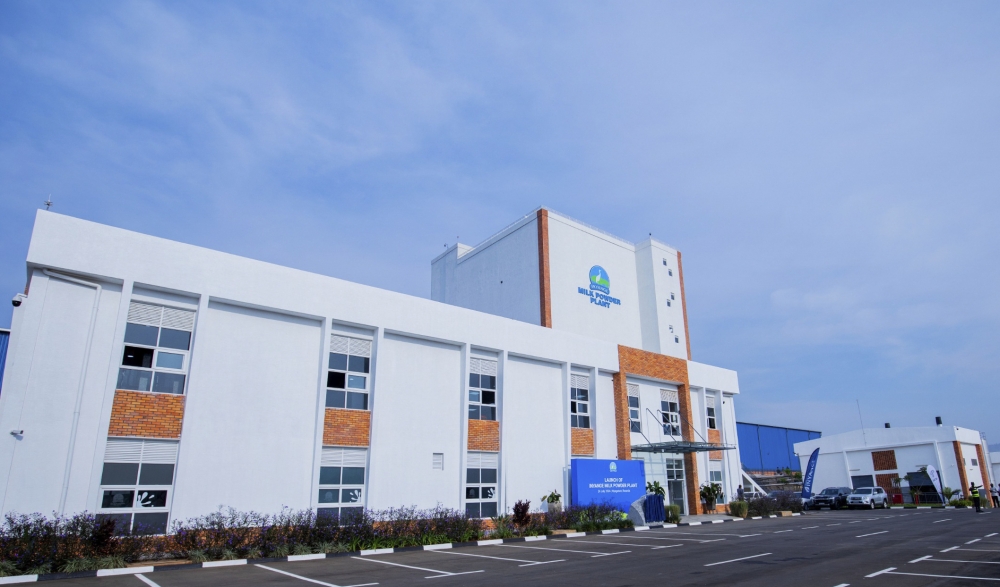Rwanda's first milk powder plant owned by Inyange Industries, a leading food processing company in the country, was inaugurated by Prime Minister Edouard Ngirente on Wednesday, July 24.
The plant located in Nyagatare District, among others, strategically positions Rwanda into the global milk powder commodity markets. For the very first time in the country's history, for example, a prospective industrial food processor based in Europe, Asia, or elsewhere around the globe, can easily know or see Rwanda as a potential supplier of the product.
Â

Being an export-oriented business, the plant also adds to the country's foreign exchange sources.
Globally, as of 2021, the largest producers of milk powder are New Zealand, China, Argentina, and Brazil.
Below are 11 key things to know about Rwanda's first powdered milk factory:
1. Products
The Milk Powder Plant (MPP) produces powder milk, butter, and ghee and UHT products, made from high-quality raw milk sourced from local farmers. The milk undergoes rigorous processing and safety measures to ensure it meets the highest standards of quality.
Â

Skimmed and whole milk powders are created through a drying process that retains essential nutrients, while butter and ghee are produced using modern methods that ensure rich taste and quality.
2. Production capacity
The plant can process 650,000 litres of milk, per day. At full capacity, it will be able to produce over 41 tonnes of quality milk powder per day.
Â

The plant will also produce 25.6 tonnes of butter per day and, or, 11.3 tonnes of ghee, per day, depending on market demand dynamics, as well as 150,000 litres of UHT milk per day.
3. Technology and quality
The plant stands out due to its advanced technology, which ensures high efficiency, safety, and quality in production. It uses cutting-edge processing technology. This ensures the highest standards of quality and efficiency in milk processing operations.
The plant is S-Mark certified by Rwanda Standards Board and its products are now on the market. The S-Mark which eliminates the need for products to be re-tested all the time is a powerful marketing tool for all manufacturers especially exporters.
By and large, Inyange products hold certifications from Rwanda Standards Board, Rwanda FDA, FSSC 22000, ISO 22000, and Halal certification standards, ensuring compliance with local and international markets.
4. Will the plant's powder milk be affordable?
Currently, the price of the plant's milk powder â€" with reference to international milk powder commodity markets â€" is $3.5, per kilo.
5. How about safety of packaging?
The plants products are packaged in bulk in a hygienic environment to ensure freshness and quality.
The packaging is set on international packaging standards for industrial milk powder products.
6. Are there any plans to create retail-friendly products?
Since the products are packaged in big sizes such as 25 kilo bags, Inyange Industries is exploring opportunities of introducing instant powder in small packets to cater for retail and consumer markets.
7. Investment cost
The total investment for the facility is approximately $54 million.
8. How does the plant impact local farmers and the community?
Among other things, the plant immediately creates a reliable market for the country's dairy farmers.
Considering the current raw milk price of roughly Rwf400 per liter, it is estimated that â€" other factors constant â€" when operating at full capacity by processing 650,000 liters per day, the plant itself will be injecting Rwf10.1 billion, annually, into the economy.
James Kagaba, the Managing Director of Inyange Milk Powder Plant, said this is only through incomes earned by dairy farmers, without considering earnings by other people such as transporters, fuels traders, and utility service providers, among others, whose livelihoods are linked to the plant.
In its current operational phase, the plant also provides 270 permanent job opportunities â€" excluding casual labourers and workers employed by cleaning service providers â€" and supports hundreds more indirectly.
9.When did operations start?
Kagaba said the factory became operational in April and has so far received 4.2 million litres of raw milk from Rwandan farmers, who were paid up to Rwf1.3 billion.
Inyange Industries enhanced milk collection from 3,000 liters per day, in 2009, to 200,000 liters per day by 2020.
The company's partnerships with farmers' cooperatives improved livelihoods and ensured fair pricing for farmers.
10. The market
The plant's primary target customers are food processing industries such as infant product manufacturers, pastry businesses, and brands offering instant milk powder products.
These products are ideal for businesses requiring high-quality milk powder for their formulations. Additionally, the products cater to both local and international markets, ensuring a broad customer base.
Locally, they support Rwandan manufacturers and consumers, while globally, they cater to the rising demand for high-quality milk products in various regions. Markets such as Zambia, Zimbabwe and Kenya have already started showing interests, officials noted.
11. Will local produce satisfy the milk powder plant?
At full capacity, the plant is able to process 650,000 litres of milk in a day. Inyange Industries Managing Director James Biseruka said this demand is not yet satisfied since the plant is still operating below 45 per cent, or with 292,500 litres, per day.
In 2022-2023, more than 81 million litres of milk were supplied to milk processing plants, according to MINAGRI annual report 2022/2023 (the latest). This supply represents less than 10 per cent of more than one billion litres of milk produced in the same fiscal year countrywide.
The remaining 357,500 liters of milk, it is hoped, will also be adequately locally supplied in not more than two years, once strategic initiatives such as the new pastureland strategy in Eastern Province, and others, start fully bearing fruit.
Last September, the Ministry of Agriculture and Animal Resources ordered 70 percent of pastureland in the districts of Nyagatare, Gatsibo, Kayonza, and Kirehe, to be put under the cultivation of crops that provide cow fodder while 30 percent is set aside for cow sheds in a bid to enforce the zero-grazing system and increase milk production.

The post Eleven things about Rwanda's first powder milk plant appeared first on The Custom Reports.
Source : https://thecustomreports.com/eleven-things-about-rwandas-first-powder-milk-plant/
